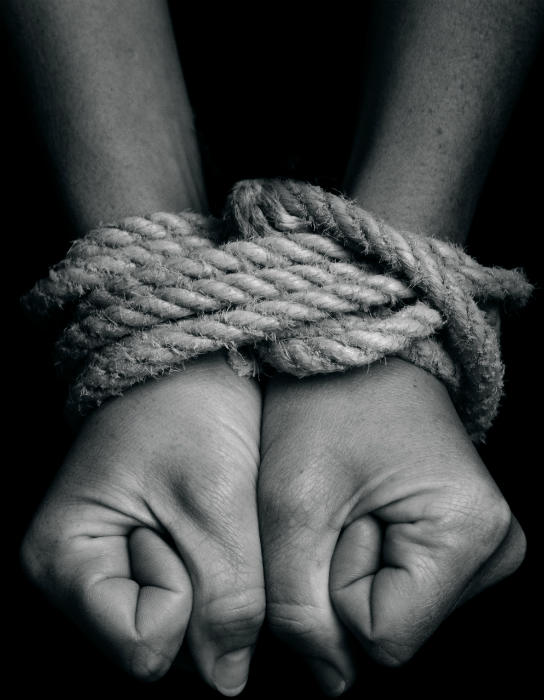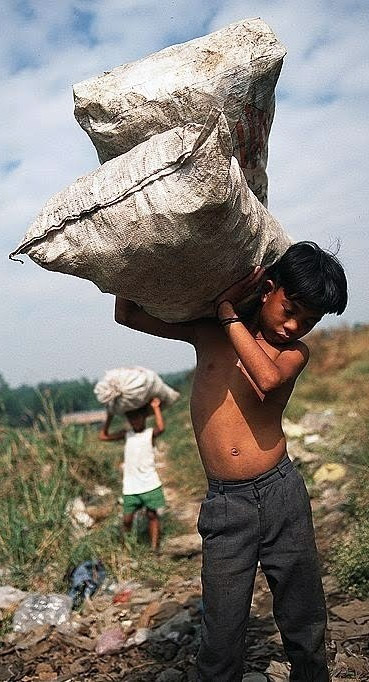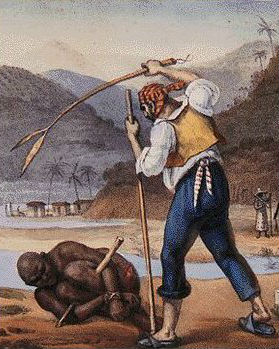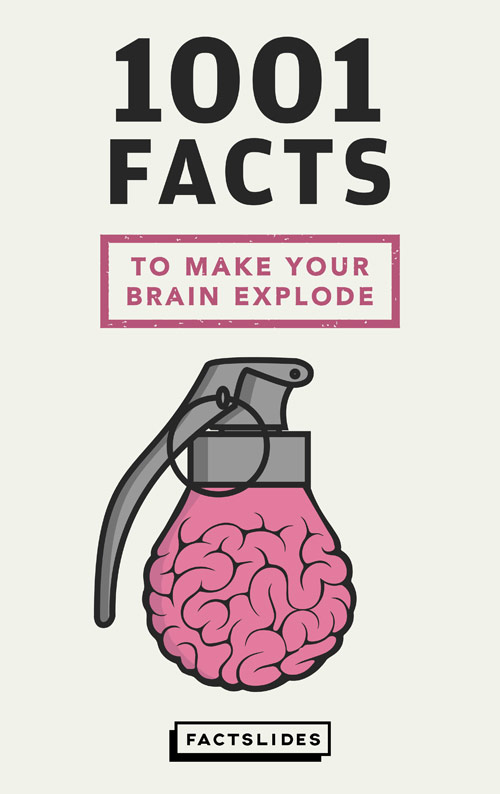
Modern versions of enslavement are estimated to trap about 45 million people worldwide.
♦ SOURCE
♺ SHARE
The figure comes from the Global Slavery Index, which defines slavery in a broad way to include forced labour, debt bondage, human trafficking, forced or servile marriage and commercial sexual exploitation. It covers 167 countries, but interviews were only carried out in 25, so the figures for the number of slaves in countries where no fieldwork took place are only extrapolations.

India has the largest slave population in the modern world with over 18 million slaves.
♦ SOURCE
♺ SHARE
40% of all slaves in the world are in India, while 3.2 million are in China and 2.1 million in Pakistan, according to the 2016 Global Slavery Index. This includes both children and adults.

Benjamin Franklin attempted to abolish slavery already in 1790.
♦ SOURCE
♺ SHARE
Franklin sent a petition to Congress asking for the abolition of slavery and an end to the slave trade in 1790. He wanted to 'promote mercy and justice toward this distressed Race', but it was immediately denounced by pro-slavery congressmen and sparked a heated debate in both the House and the Senate.
America's first slave owner was a black man.
♦ SOURCE
♺ SHARE

Africans arriving to America the were originally considered 'indentured servants': they had a contract which obligated them to work for its holder for the period it set, after which they were free. That's what happened to Anthony Johnson, a black Angolan, who achieved his freedom and went on to run his own tobacco farm and hold his own indentured servants. Among them was a man called John Casor. Casor claimed his contract was for 8 years. But Johnson took him to court, claiming he was his servant for life. The court sided with Johnson, making Castor the first person to be arbitrarily declared a servant for life --a slave-- in the U.S.

Part of the White House was built by slaves.
♦ SOURCE
♺ SHARE
Most of the labor that built the White House, the United States Capitol, and other early government buildings was provided by African Americans, both enslaved and free. The government did not own slaves, but it did hire them from their masters.
The concept behind the word "cool" might come from the African word "itutu", brought to America by slavery.
♦ SOURCE
♺ SHARE
The word 'itutu' is a quality of character denoting composure in the face of danger, as well as playfulness, humor, generosity, and conciliation. It was carried to America with slavery and became a code through which to conceal rage and cope with brutality with dignity.
The pyramids were built by paid laborers. Not slaves. That's a myth by Herodotus, the Greek historian.
♦ SOURCE
♺ SHARE
Egypt's chief archaeologist, Zahi Hawass, says he builders came from poor families from the north and the south, and were respected for their work. So much that those who died during construction were given the honour of being buried in the tombs near the sacred pyramids of their pharaohs.
There are species of ants that enslave other ants.
♦ SOURCE
♺ SHARE

There are 14 described species of 'slave-raiding' ants. They steal ants from nearby colonies and carry them back to their own nest.

Slavery was not made a statutory offense in the UK until April 6, 2010.
♦ SOURCE
♺ SHARE
If a criminal forced a victim already inside the UK or from the EU into servitude, they could not be prosecuted for trafficking. So the new law was set out to recognise forced labour as a crime on its own.

There are more people in slavery today than at any time in human history.
♦ SOURCE
♺ SHARE
27 million people are estimated to be enslaved today, more than double the total number believed to have been taken from Africa during the transatlantic slave trade.

Slavery was abolished in Saudi Arabia and Yemen as recently as 1962.
♦ SOURCE
♺ SHARE
Niger abolished slavery in 1960, Bhutan in 1958, Qatar in 1952 and Kuwait in 1949.

Ancient Greeks and Romans often bought slaves with salt.
♦ SOURCE
♺ SHARE
Not only did salt serve to flavor and preserve food, it made a good antiseptic, which is why the Roman word for it is a first cousin to Salus, the goddess of health.

About 4 million slaves were taken from Africa to Brazil, about 40% of all in the Americas.
♦ SOURCE
♺ SHARE
Some estimate that up to 4.9 million slaves were brought to Brazil from Africa during the period from 1501 to 1866, the most of any country. First sugar, then gold, diamond, cattle ranching and foodstuff production sparked the importation of African slaves. In 1888, Brazil became the last country in the Western world to abolish slavery.
Over a million Europeans were captured and sold as slaves to North Africa between 1530 and 1780.
♦ SOURCE
♺ SHARE

Ottoman and Berber pirates and privateers, who operated from North Africa, engaged in raids on European coastal towns and villages. The main purpose of their attacks was slaves for the Ottoman slave trade as well as the general Arab slavery market in North Africa and the Middle East. Slaves in Barbary could be black, brown or white, Catholic, Protestant, Orthodox, or Jewish.
Most Romans avoided being cruel to slaves. They used bonuses and branding to improve productivity, just like modern employers.
♦ SOURCE
♺ SHARE
Romans understood that slaves could not simply be terrified into being good at their job. Instead, the Romans used various techniques to encourage their slaves to work productively and willingly, from bonuses and long-term inducements, to acts designed to boost morale and generate team spirit.

Before publishing "Don Quixote," Cervantes was captured and kept as slave for 5 years in Algiers. A ransom was paid by his parents.
♦ SOURCE
♺ SHARE
Cervantes was as a soldier in a regiment of the Spanish Navy Marines, when in 1575, his galley was attacked by Ottoman pirates. After five years and four unsuccessful escape attempts, he was ransomed by his parents and the Trinitarians and returned to his family in Madrid.
The Christian hymn was written by the English poet John Newton in 1772. Some decades before that, a violent storm battered his vessel so severely that he called out to God for mercy: this moment marked his spiritual conversion. But he continued slave trading until 1754.
Richard Johnson, the 9th U.S. Vice-President, openly treated an African-American woman as his wife, although legally she was his slave.
♦ SOURCE
♺ SHARE
Johnson even acknowledged their two daughters as his children, giving them his surname, much to the consternation of some of his constituents.

Mississippi didn't ratify the 13th Amendment, abolishing slavery, until 2013.
♦ SOURCE
♺ SHARE
The amendment was adopted in 1865 but Mississippi was a holdout. At the time, state lawmakers were upset that they had not been compensated for the value of freed slaves. So it wasn't until 2013 that the state of Mississippi submitted the required documentation to ratify the amendment, forced by two medical school colleagues who joined forces to resolve the historical oversight.
By 1850, American slaves were worth US$1.3 billion, one-fifth of the nation's wealth.
♦ SOURCE
♺ SHARE
Academic Edward Baptist's book, 'The Half Has Never Been Told: Slavery And The Making Of American Capitalism', crunched economic data to come up with this back-of-the-envelope estimate.

In 1833, Britain used 40% of its national budget to buy freedom for all slaves in the Empire.
♦ SOURCE
♺ SHARE
The Slavery Abolition Act of 1833 provided for payments to slave-owners, so the British government raised £20 million, which amounted to 40% of the Treasury's annual income.

Ancient Romans celebrated "Saturnalia", a festival in which slaves and masters would switch places.
♦ SOURCE
♺ SHARE
During Saturnalia, slaves were treated to a banquet like those usually enjoyed by their masters. Slaves were also allowed to disrespect their masters without punishment. Gambling and dice-playing was also permitted, along with overeating and drunkenness.
A London couple kept a man from Nigeria as their slave for 24 years before he finally escaped. They were finally arrested and sentenced to 6 years in prison in 2015.
♦ SOURCE
♺ SHARE
He was 14 years old in 1989 when he left his native Nigeria with the couple who brought him to the UK. He believed he would be working as a paid 'houseboy' and receive education in the UK, but he ended up in servitude.
In Missouri during the 1860s, a "snowflake" was a person who was opposed to the abolition of slavery.
♦ SOURCE
♺ SHARE
Current available evidence of the word 'snowflake' dates it only to early 18th century Missouri, where they gave that name to those who valued white people over black people.

James Buchanan, the 15th U.S. President, opposed to slavery but believed it was protected by the Constitution, so he brought slaves with his own money to free them.
♦ SOURCE
♺ SHARE
Slavery was a hot topic and Buchanan kept neutral image to assure political capital from both sides. He bought slaves, then turned many of them into his servants, so while technically free, they were still bound to him for years, making his position ambiguous.
In 1860 there were 4 million slaves in the U.S.
♦ SOURCE
♺ SHARE
In 1860, when Abraham Lincoln was elected to the presidency, the slave population was nearly four million, making the ratio of free to enslaved Americans approximately 7:1.

















